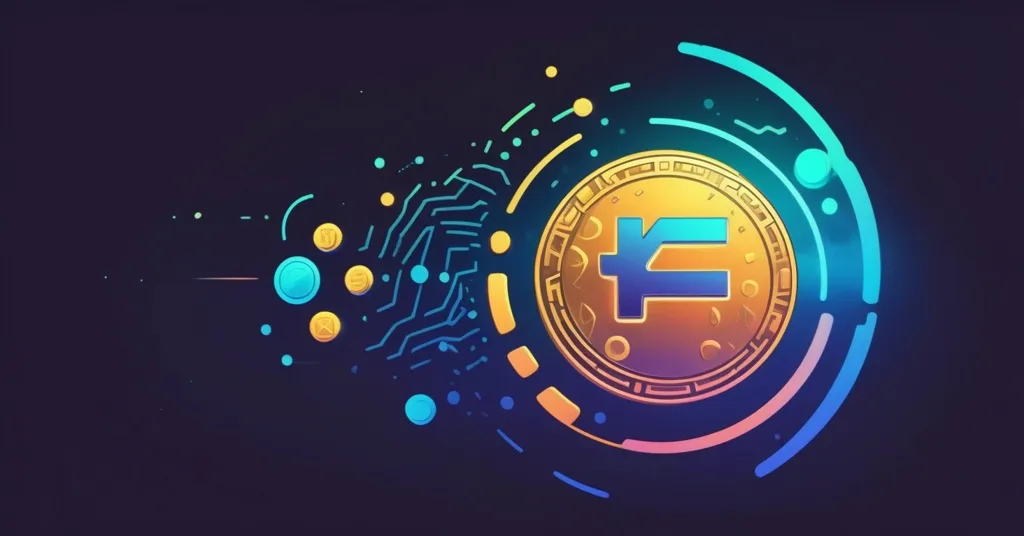Pepe Coin Hype Fades, Bitcoin Solaris Rises with Smartphone Mining Innovation

From Pepe Coin Hype to Bitcoin Solaris: The New Frontier of Smartphone Mining
The decline of Pepe Coin’s hype underscores the volatility of meme-based tokens, while Bitcoin Solaris emerges as a promising alternative, offering tangible earnings through smartphone mining.
- Pepe Coin’s hype fades due to lack of utility.
- Bitcoin Solaris introduces smartphone mining via Nova App.
- Dual-layer infrastructure supports scalability and smart contracts.
- Security audits and presale underway.
The Downfall of Meme Coins: Pepe Coin’s Journey
Pepe Coin captured massive attention at launch, surging in value on the back of meme momentum and viral community hype. But like many meme-based tokens before it, sustained utility has proven elusive. As one observer noted, “Pepe Coin captured massive attention at launch, surging in value on the back of meme momentum and viral community hype. But like many meme-based tokens before it, sustained utility has proven elusive.” Meme-based tokens often rely on viral hype rather than built-in incentives or practical mechanisms for ongoing user engagement, which can lead to their downfall. For more on the long-term utility and market performance of Pepe Coin, see detailed analysis.
Introducing Bitcoin Solaris: A New Era in Mining
In stark contrast, Bitcoin Solaris offers a fundamentally different model — one centered on daily earning through accessible, low-barrier mobile mining. Users can download the Nova App, which cleverly uses their smartphone’s idle storage and CPU power to generate daily rewards in BTC-S tokens. This approach eliminates the need for costly hardware, making it an attractive proposition for those looking to dip their toes into crypto mining without breaking the bank.
Bitcoin Solaris’s innovative approach doesn’t stop at mining. The project features a dual-layer infrastructure: the Base Layer uses Proof-of-Stake (PoS), where validators are chosen based on the number of coins they hold, and Proof-of-Capacity (PoC), which uses storage space as a mining resource. The Solaris Layer employs Proof-of-History (PoH), a method to timestamp transactions, and Proof-of-Time (PoT), which ensures transactions are processed in chronological order. This setup allows the Solaris Layer to handle over 10,000 transactions per second with a remarkable 2-second finality, showcasing impressive scalability and efficiency.
The Presale and Security Measures
Currently, Bitcoin Solaris is in Presale Phase 3, offering BTC-S tokens at $3 USDT. With only 4.2 million tokens (20% of the total supply) allocated to the presale, and a cap set at 21 million tokens, early adopters have a golden window to get involved. The project has also undergone rigorous security audits by Cyberscope and Freshcoins, ensuring the integrity of its smart contracts and token emission mechanisms. However, it’s worth noting that while the team has completed KYC verification, Cyberscope did not perform this verification, which is a slight discrepancy to address. For community discussions on the presale, check out Bitcoin Solaris presale discussions.
Bitcoin Solaris’s Impact on the Crypto Ecosystem
By allowing users to mine BTC-S tokens using their smartphones, Bitcoin Solaris could democratize access to cryptocurrency, bringing mining opportunities to a wider audience. This approach could be a game-changer, making crypto mining more accessible and less energy-intensive than traditional methods. However, it also raises questions about energy consumption and the potential for centralization if the app becomes too popular. Looking ahead, the project faces challenges such as ensuring long-term user engagement and navigating regulatory landscapes. To learn more about the technology behind the Nova App, visit the Bitcoin Solaris smartphone mining wiki.
While Bitcoin Solaris’s approach to smartphone mining offers an exciting opportunity, it’s crucial to remain cautious. The cryptocurrency landscape is littered with projects that promise the moon but deliver little. However, with its solid infrastructure, security measures, and a clear focus on user engagement, Bitcoin Solaris might just be the beacon of innovation we need in a sea of meme-based tokens. To understand the shift from meme coins to more substantive projects like Bitcoin Solaris, read about the fade of Pepe Coin hype and the rise of Bitcoin Solaris.
Key Takeaways and Questions
- What are the limitations of meme-based tokens like Pepe Coin?
Meme-based tokens often lack sustained utility, relying on viral hype rather than built-in incentives or practical mechanisms for ongoing user engagement. For a deeper dive into these limitations, see discussions on meme-based token limitations.
- How does Bitcoin Solaris’s smartphone mining model work?
Users can earn BTC-S tokens by running the Nova App on their smartphones, which utilizes idle storage and CPU power to generate daily rewards without the need for hardware investment.
- What makes Bitcoin Solaris’s infrastructure unique?
Bitcoin Solaris employs a dual-layer system with the Base Layer using PoS and PoC for security, and the Solaris Layer using PoH and PoT for smart contract processing, enabling high scalability and efficiency.
- What security measures has Bitcoin Solaris implemented?
The project has undergone security audits by Cyberscope and Freshcoins, and while the team has completed KYC verification, Cyberscope did not perform this verification.
- What is the current status of Bitcoin Solaris’s presale?
Bitcoin Solaris is in Presale Phase 3, offering BTC-S tokens at $3 USDT, with only 20% of the total supply allocated to the presale.
- How does Bitcoin Solaris aim to redefine user participation in blockchain?
By providing a tangible earning mechanism through smartphone mining and ensuring a transparent, audited ecosystem, Bitcoin Solaris aims to offer a user-first approach to blockchain participation.



